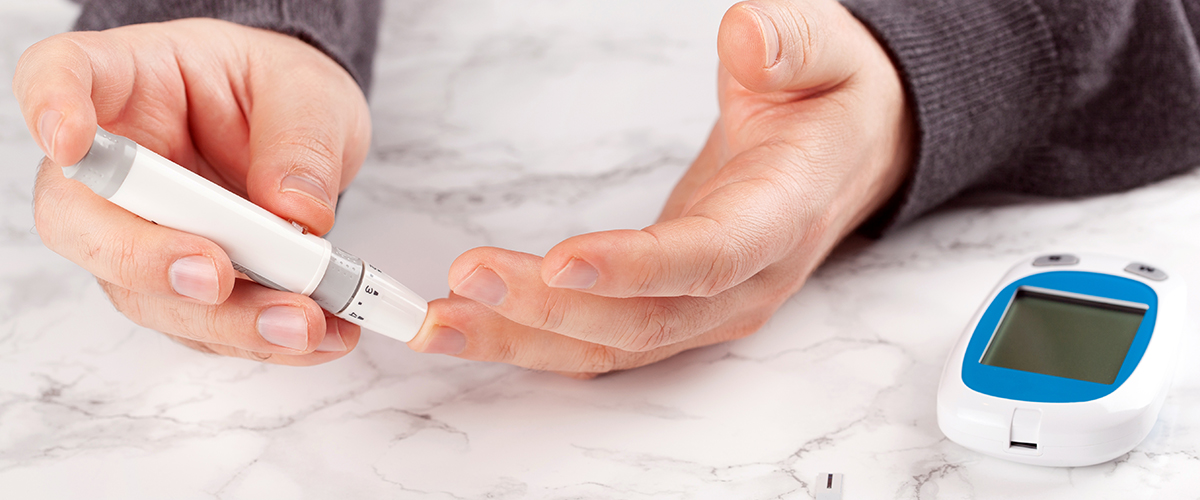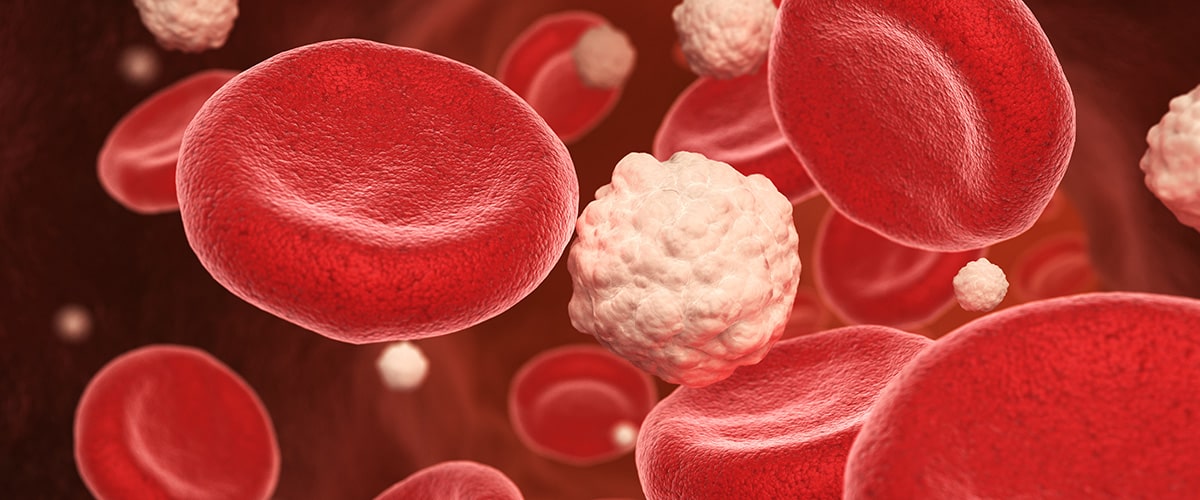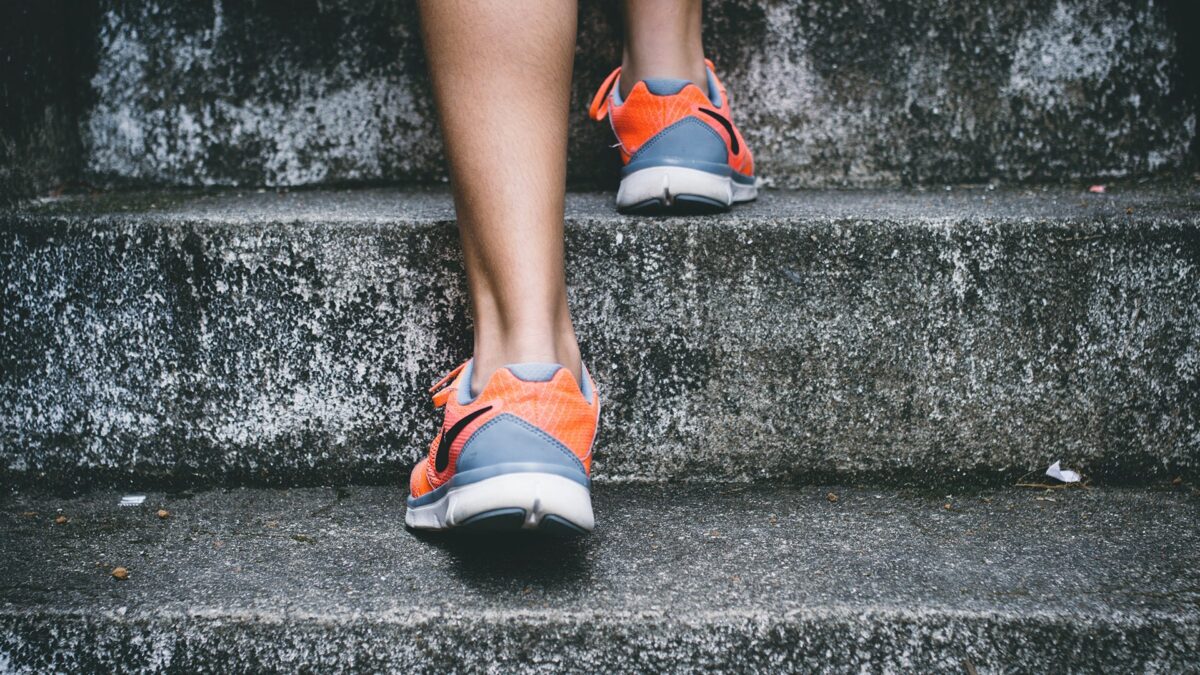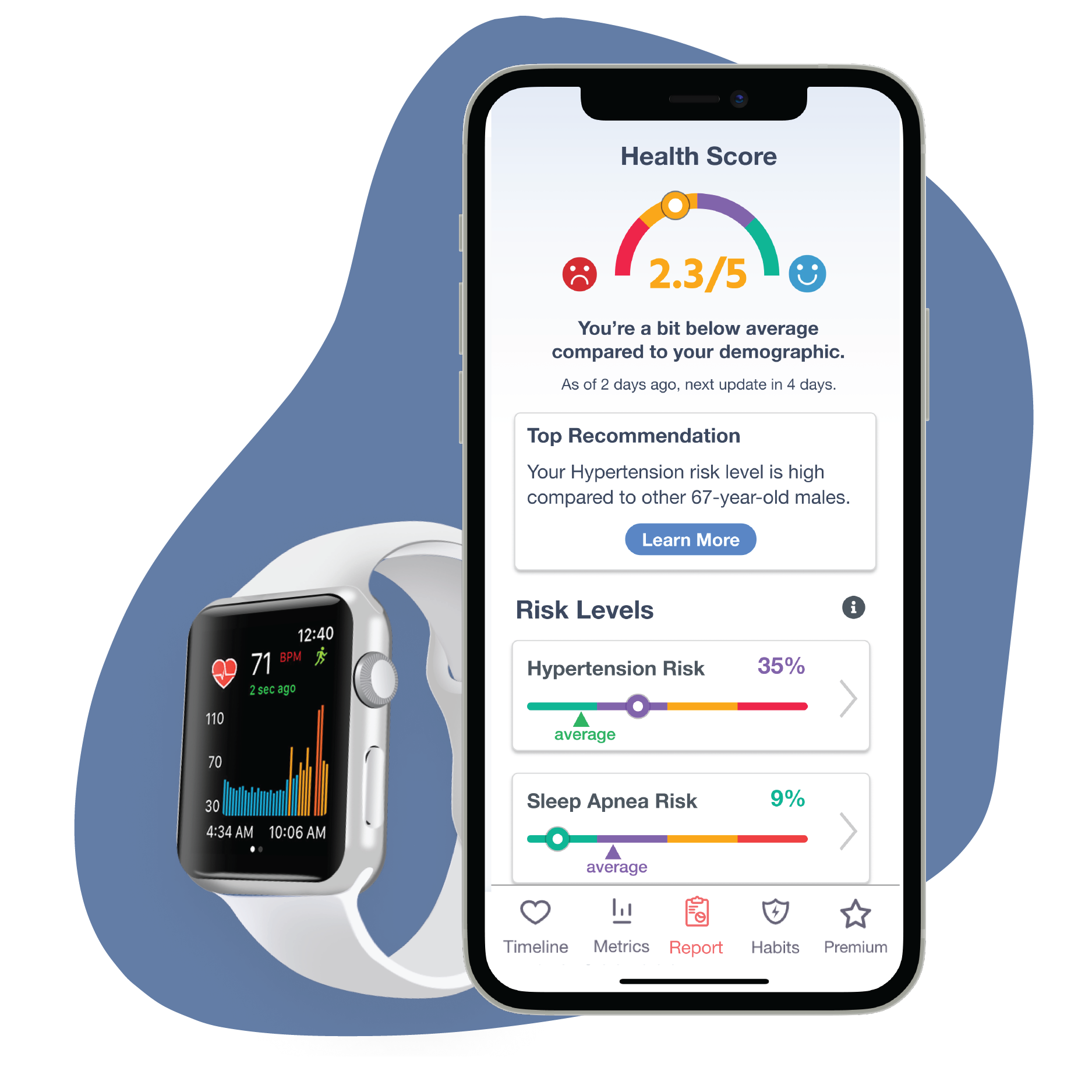
People with T2DM who live a physically active lifestyle maintain better control over the disease and its complications. And maintaining a healthy body weight and an active lifestyle may even prevent T2DM1,2.
Physical activity also has a positive impact on reducing problems associated with diabetes and prediabetes by helping you to:
- Lose weight
- Become more fit
- Reduce blood pressure
- Increase ‘good’ cholesterol
- Stabilize blood sugar levels
All of which will influence the chances of a pre-diabetes or diabetes diagnosis1.
Unfortunately, around 40.8% of people with T2DM get less than 10 minutes of moderate or vigorous physical activity each week3. The sooner people who have developed or are at risk of developing T2DM begin incorporating more movement into their days, the sooner they can gain control over their risk factors and influence the disease outcomes through lifestyle changes.

The ADA differentiates physical activity from exercise, stating, “Physical activity includes all movement that increases energy use, whereas exercise is planned, structured physical activity4.” At times these terms are used interchangeably to acknowledge that many types of physical activity can have a positive effect on the risk factors and complications of T2DM.
According to the ADA guidelines, a physically active lifestyle for those with T2DM should include1:
- 150 minutes or more of moderate intensity aerobic activity every week, spread over at least three days/week.
- No more than two consecutive days should exclude activity.
- For younger or fit individuals, shorter exercise sessions (minimum 75 min/week) of vigorous intensity or interval training may be sufficient.
- Resistance training two to three times per week on nonconsecutive days. (Those with diabetes have accelerated loss of muscle strength and can benefit from regular resistance exercise.)
- Limited prolonged sedentary activities such as sitting. Sedentary time should be interrupted every 30 minutes with a higher level of activity.
- Flexibility work and balance training for older adults two to three times per week to improve muscle strength, balance, and flexibility.
Recent studies also show that resistance training is a highly effective type of exercise for those with T2DM5,6. High-intensity interval training (HIIT), which incorporates quick, intense bursts of exercise, followed by less intense movements as an active recovery period, has also been shown to increase sensitivity to insulin and improve blood sugar control4,7. And a combined program of aerobic exercise and strength training can improve glycemic control for people with T2DM more than either type of exercise alone5,8,9.


Physical activity enhances insulin action which continues long after an exercise session has ended4 (over 24 hours) which is one of the main reasons it’s so beneficial for those with T2DM.
Of course, the effect on insulin action and glucose tolerance varies with the duration and intensity of the physical activity, so it’s difficult to gauge exactly to what extent exercise will positively impact insulin action and glucose tolerance4,12,13. But we do know that most people with T2DM see decreases in their blood glucose levels during mild to moderate intensity aerobic exercise for up to 72-hours post-exercise4,14.
Research has also shown that one of the effects of exercise, a desirable improvement in whole-body insulin sensitivity, is lost within five to 10 days of stopping an exercise regimen15. So, it’s important to not only start engaging in more physical activity, but to also be consistent in your routine.

It’s never too late or too early to start working towards prevention or management.
To help clients with T2DM obtain consistent benefits in insulin action and improved glucose tolerance, they should participate in aerobic exercise at least three days per week, with no more than two days between exercise sessions. The rationale for this recommendation is that exercise-induced improvements in insulin action do not last but can continue to impact blood glucose levels up to 24 hours16.
Here are three simple ways you can start moving now:
Any increase in physical activity is better than no increase at all.
- Examine your daily routine to discover where you could move more during everyday activities.
- Keep a log to mark each time you stand or walk after sitting or lying down. You can do this by using tagging in the Cardiogram app.
- Look for ways to increase the times you stand or walk after sitting by scheduling an hourly “stretch and walk” after sitting or watching television, park the car farther from the store, or weed the garden 10 minutes a day.
Join an exercise program that is supervised by qualified exercise trainers. Studies have shown that people with T2DM who join supervised exercise programs have better adherence to the exercise program and show the greatest improvements in blood glucose control4.

What could you tweak in your current routine to achieve even better control over your blood sugar levels?
- If you walk three days a week, consider adding strength training two days a week.
- If you strength train two or three days a week, consider adding walking, stationary bicycling, or the elliptical trainer three days a week.
- If you plan to increase the intensity of your exercise, it’s a good idea to check with their physician to determine if an exercise stress test is needed.
- Consider what you could change so you move more during activities of daily living.
A physically active lifestyle, especially when coupled with the appropriate diet, can prevent or delay the onset of T2DM through improved blood glucose control and by positively affecting blood lipids and blood pressure. These, in turn, reduce the risk of cardiovascular events and mortality1. Because physical activity is a cornerstone in the prevention and management of T2DM, do everything you can to become more physically active.
- American Diabetes Association. (2019) Standards of Medical Care in Diabetes-2019. Diabetes Care, 42(Supp.1), S1–S193. Retrieved from https://care.diabetesjournals.org/content/diacare/suppl/2018/12/17/42.Supplement_1.DC1/DC_42_S1_2019_UPDATED.pdf
- Schellenberg, E. S., Dryden, D. M., Vandermeer, B., Ha, C., & Korownyk, C. (2013). Lifestyle interventions for patients with and at risk for type 2 diabetes: A systematic review and meta-analysis. Annals of Internal Medicine, 159(8), 543. doi:10.7326/0003-4819-159-8-201310150-00007
- Centers for Disease Control. (2017). National Diabetes Statistics Report, 2017. Retrieved from https://www.cdc.gov/diabetes/pdfs/data/statistics/national-diabetes-statistics-report.pdf
- Colberg, S.R., Sigal, R.J., Yardley, J.E., Riddell, M.C., Dunstan, D.W., Dempsey, P.C…. Tate, D.F. (2016). Physical activity/exercise and diabetes: A position statement of the American Diabetes Association. Diabetes Care. 39(11):2065-2079. doi:10.2337/dc16-1728.
- Armstrong, M. J., Colberg, S. R., & Sigal, R. J. (2015). Moving beyond cardio: The value of resistance training, balance training, and other forms of exercise in the management of diabetes. Diabetes Spectrum: A Publication of the American Diabetes Association, 28(1), 14-23. doi:10.2337/diaspect.28.1.14
- Liu, Y., Ye, W., Chen, Q., Zhang, Y., Kuo, C.H., Korivi, M. (2019). Resistance Exercise Intensity is Correlated with Attenuation of HbA1c and Insulin in Patients with Type 2 Diabetes: A Systematic Review and Meta-Analysis. Int J Environ Res Public Health. 7;16(1). pii: E140. doi: 10.3390/ijerph16010140.
- Jelleyman, C., Yates, T., O'Donovan, G., Gray, L. J., King, J. A., Khunti, K., & Davies, M. J. (2015). The effects of high-intensity interval training on glucose regulation and insulin resistance: A meta-analysis: The effects of HIIT on metabolic health. Obesity Reviews, 16(11), 942-961. doi:10.1111/obr.12317
- Sigal, R. J., Kenny, G. P., Boulé, N. G., Wells, G. A., Prud'homme, D., Fortier, M., . . . Jaffey, J. (2007). Effects of aerobic training, resistance training, or both on glycemic control in type 2 diabetes: A randomized trial. Annals of Internal Medicine, 147(6), 357. doi:10.7326/0003-4819-147-6-200709180-00005
- Church, T. S., Blair, S. N., Cocreham, S., Johannsen, N., Johnson, W., Kramer, K., . . . Earnest, C. P. (2010). Effects of aerobic and resistance training on hemoglobin A1c levels in patients with type 2 diabetes : A randomized controlled trial. Jama, 304(20), 2253-2262. doi:10.1001/jama.2010.1710
- Hamman, R. F., Wing, R. R., Edelstein, S. L., Lachin, J. M., Bray, G. A., Delahanty, L., . . . for the Diabetes Prevention Program Research Group. (2006). Effect of weight loss with lifestyle intervention on risk of diabetes. Diabetes Care, 29(9), 2102-2107. doi:10.2337/dc06-0560
- Wing, R. R., Bolin, P., Brancati, F. L., Bray, G. A., Clark, J. M., Coday, M., . . . Look AHEAD Research Group. (2013). Cardiovascular effects of intensive lifestyle intervention in type 2 diabetes. The New England Journal of Medicine, 369(2), 145-154. doi:10.1056/NEJMoa1212914
- Bajpeyi, S., Tanner, C. J., Slentz, C. A., Duscha, B. D., McCartney, J. S., Hickner, R. C., . . . Houmard, J. A. (2009). Effect of exercise intensity and volume on persistence of insulin sensitivity during training cessation. Journal of Applied Physiology, 106(4), 1079-1085. doi:10.1152/japplphysiol.91262.2008
- King, D. S., Baldus, P. J., Sharp, R. L., Kesl, L. D., Feltmeyer, T. L., & Riddle, M. S. (1995). Time course for exercise-induced alterations in insulin action and glucose tolerance in middle-aged people. Journal of Applied Physiology, 78(1), 17-22. doi:10.1152/jappl.1995.78.1.17
- O’Gorman, D. J., Karlsson, H. K. R., McQuaid, S., Yousif, O., Rahman, Y., Gasparro, D., . . . Nolan, J. J. (2006). Exercise training increases insulin-stimulated glucose disposal and GLUT4 (SLC2A4) protein content in patients with type 2 diabetes. Diabetologia, 49(12), 2983-2992. doi:10.1007/s00125-006-0457-3
- van Dijk, J., & van Loon, Luc J C. (2015). Exercise strategies to optimize glycemic control in type 2 diabetes: A continuing glucose monitoring perspective. Diabetes Spectrum: From Research to Practice, 28(1), 24-31. doi:10.2337/diaspect.28.1.24
- Newsom, S. A., Everett, A. C., Hinko, A., & Horowitz, J. F. (2013). A single session of low-intensity exercise is sufficient to enhance insulin sensitivity into the next day in obese adults. Diabetes Care, 36(9), 2516-2522. doi:10.2337/dc12-2606




